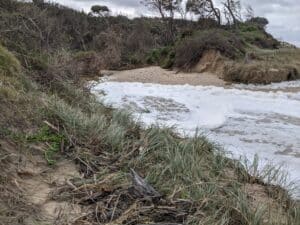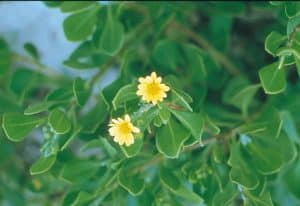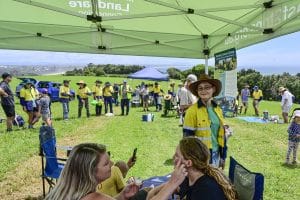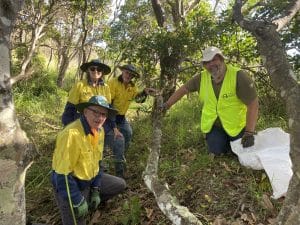Shorebirds Season Update
Silas Darnell, the local Beach Ranger for National Parks, has been out again this summer, keeping tabs on the success of the breeding seasons of the incredible shorebirds that grace our coastline in the warmer months. He tells us:
“The Pied Oystercatchers at Farquhar did quite well with five fledglings from four pairs. The nesting started pretty early and all birds were fledged well in advance of the chaos of the holiday season.
The Little Terns have unfortunately had a pretty mediocre season with 45 nests being laid in total, the last of which we raised up onto sandbags in anticipation of the low pressure system that hit the area last week. Unfortunately the southern part of the fenced area was almost totally inundated and while the sandbags helped, there was significant water damage to the nest and the eggs appeared to be abandoned. In the week prior to the wet weather there were a fair few chicks seen and lots of activity overhead. However, as the weather was deteriorating Silver Gulls were seen predating chicks in the area hardest hit by the large seas. It remains to be seen if they survived, but a telescope survey on Monday January 21st did not suggest positive results. So far there have been 5 fledglings seen at Farqhuar and I am hopeful for a few more.
We had some repeated fox entry and wandering through the nest area, though only a couple of nests were confirmed to be predated. The number is likely higher, though, as several nests remain unaccounted for. A fox was later trapped nearby, so hopefully that is the end of that for now.
From Harrington, the news is:
Little Terns: To date, 56 nests, 116 eggs, 54 chicks, approximately six fledglings, At least 43 breeding pairs.
Pied Oystercatchers: three breeding pairs, three nests / five eggs, at least four chicks and one fledgling observed (possibly three to four fledglings observed on 17/1/25 in a flock of 34 birds). No known or observed egg or chick losses.
Also in Harrington:
- Two Sooty Oystercatchers were observed infrequently around Harrington Waters (on low tide sandbanks) and on the sandspit.
- Red-capped Plovers observed all over the sandspit. We suspect some nests recorded as little tern nests were actually Red-capped Plovers. Observed several RCP juveniles foraging with parents during December and January.
- Eastern Curlews were observed on the sandspit at various times, sometimes in flocks of 15-17.
- A Bush-Stone Curlew was observed in the Harrington IGA shopping carpark on 24 December 2024.”





